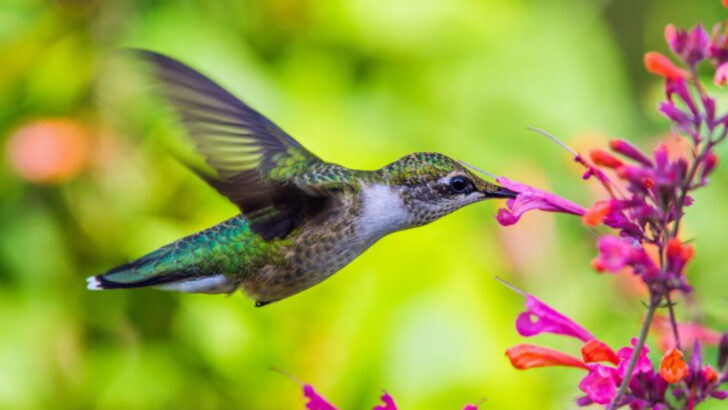Hummingbirds are nature’s tiny daredevils, and they live life at full speed. Their hearts beat over 1,200 times per minute, their wings blur into invisibility, and they’re constantly seconds away from starving.
These fearless little creatures don’t just hover—they fight mid-air battles, remember every flower they’ve ever visited, and even recognize human faces. Some fly thousands of miles without stopping, while others sleep in a state that’s practically a mini-coma.
They may look delicate, but hummingbirds are some of the toughest birds on the planet. They chase off hawks, survive brutal storms, and can even fly backward like it’s no big deal.
If you think you know everything about these sugar-fueled wonders, prepare to be amazed. Some of these facts are so strange, they sound made up—but every single one is true!
The Only Birds That Can Fly Backwards
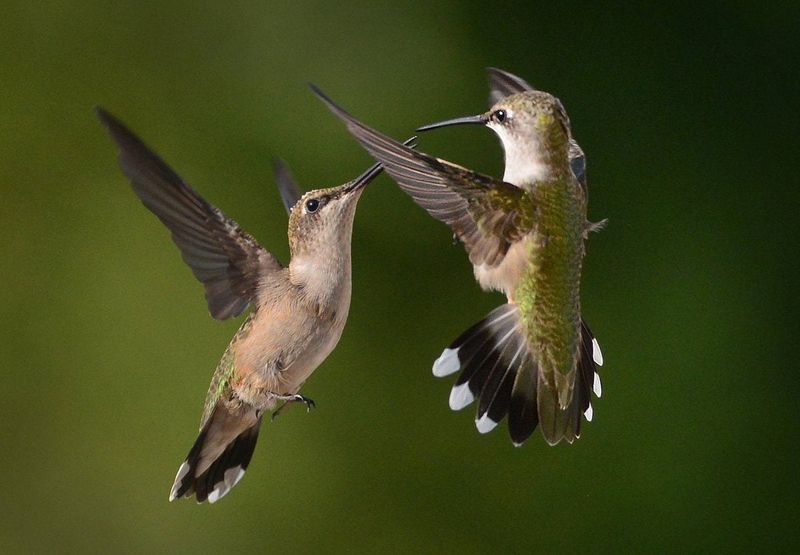
Hummingbirds possess a unique ability among birds: they can fly backwards. This remarkable skill is due to their wing structure, which allows them to rotate their wings in a figure-eight pattern. This motion grants them incredible agility and precision in flight.
Their wings beat incredibly fast, around 50 times per second, enabling them to hover in place with ease. This hovering ability helps them access nectar from flowers, a key food source for these energetic creatures.
The mechanics of their flight continue to fascinate scientists and bird enthusiasts alike, showcasing the hummingbird’s marvel.
Heartbeats Per Minute
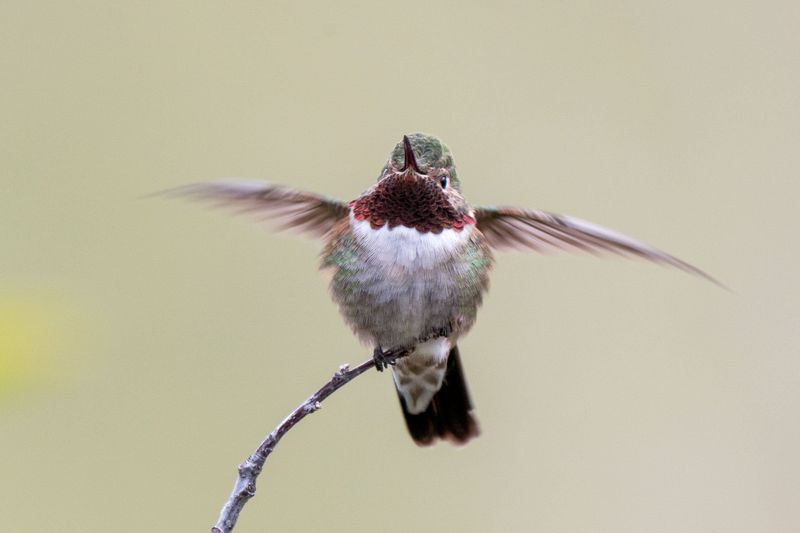
The hummingbird’s heart is a powerhouse, beating at an astonishing rate. When in flight, a hummingbird’s heart can beat up to 1,260 times per minute. This rapid heartbeat supports their high-energy lifestyle, providing the necessary oxygen and nutrients for their muscles.
At rest, their heart rate decreases significantly, conserving energy. This adaptability is crucial, allowing them to survive in various environments.
Understanding their cardiovascular system reveals how these small birds maintain their incredible stamina and endurance, defying the limitations typically faced by such tiny creatures.
Weight Like a Coin
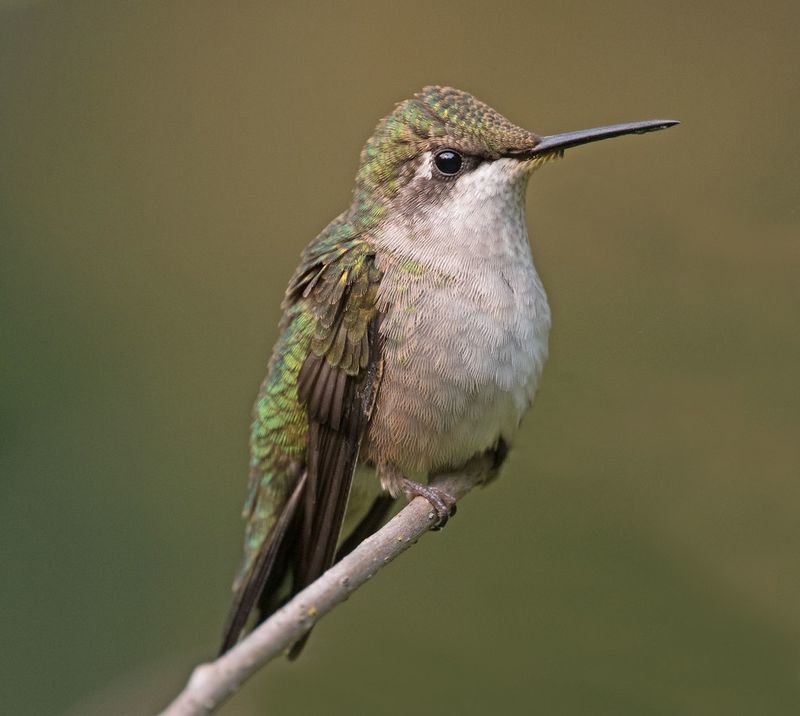
Hummingbirds are incredibly lightweight, with most species weighing less than a nickel. Despite their small size, they exhibit immense strength and agility. This lightness is crucial for their aerial prowess, allowing them to perform complex maneuvers with ease.
Their bones are hollow, a feature common among birds, reducing their weight further. This adaptation is key to their survival, enabling them to travel vast distances during migration.
The juxtaposition of their fragile appearance with their robust capabilities makes them remarkable creatures, earning admiration from all who observe them.
Tiny but Mighty Migrators
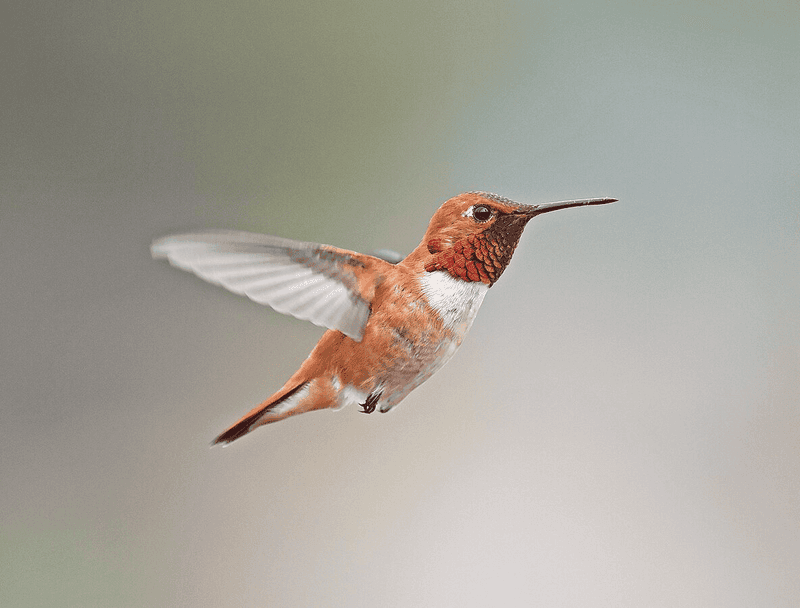
Hummingbirds are known for their impressive migratory journeys, traversing thousands of miles between breeding and wintering grounds. Some species, like the Ruby-throated Hummingbird, travel over 3,000 miles from Central America to North America.
These journeys are particularly daunting as hummingbirds must cross vast bodies of water without stopping. They rely on their fat reserves, built up before migration, to fuel these long flights.
Their endurance and navigation skills during migration are a testament to their resilience, showcasing their ability to overcome the odds in their quest for survival.
Super Fast Wing Beats
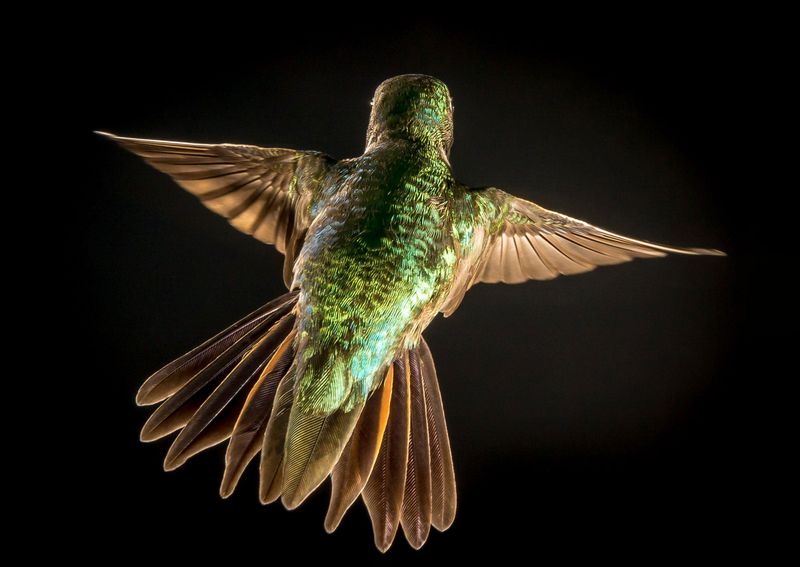
A hummingbird’s wings beat with incredible speed, creating the signature humming sound that gives them their name. Depending on the species, their wings can beat between 50 to 80 times per second.
This rapid wing movement allows for precision hovering and agile flight, essential for feeding on nectar. It’s an energy-intensive process, requiring substantial caloric intake to sustain their activity.
Observing a hummingbird in action, it’s easy to be mesmerized by their speed and grace, a true testament to the wonders of nature and the marvels of evolution.
Hummingbirds Have No Sense of Smell
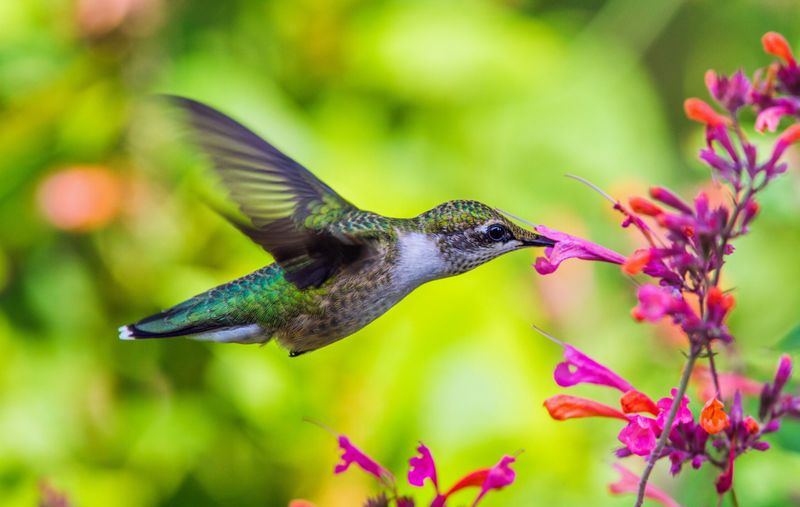
Surprisingly, hummingbirds lack a sense of smell. Instead, they rely on their exceptional vision to find food sources. Their keen eyesight allows them to detect colors and patterns that indicate nectar-rich flowers.
This adaptation is particularly beneficial as it helps them locate food quickly in diverse environments. Bright colors, especially red and orange, attract hummingbirds, leading them to abundant food sources.
Despite the absence of smell, their other senses compensate, enabling them to thrive. This unique trait underscores their adaptability and the intricate balance of their sensory abilities.
Hummingbird’s Long Tongue
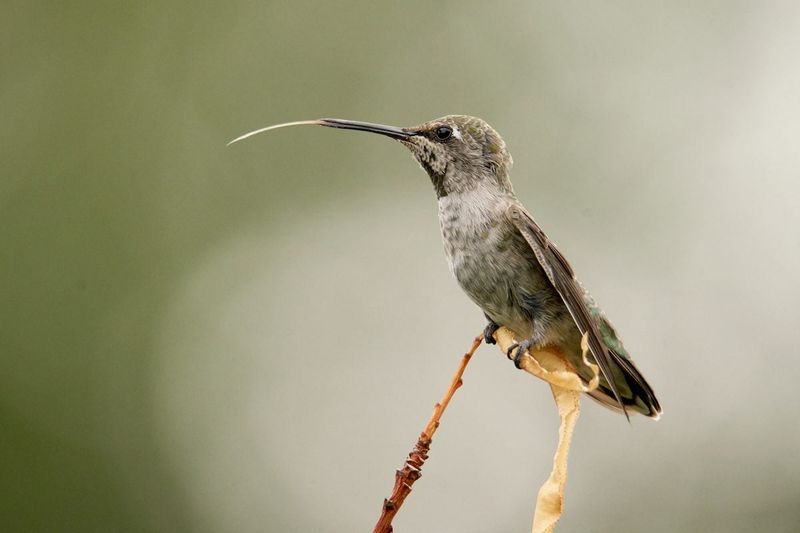
The hummingbird’s tongue is a marvel of nature, specially adapted for nectar feeding. Long and extendable, it can reach deep into flowers to extract their sweet sustenance.
The tongue’s tip splits into two, forming a tube-like structure that traps nectar as it retracts. This efficient feeding mechanism allows them to consume up to twice their body weight in nectar daily.
Their rapid tongue movement, flicking in and out at lightning speed, is awe-inspiring. Such specialization highlights their evolutionary path and their role as vital pollinators in many ecosystems.
Remarkable Memory Capabilities
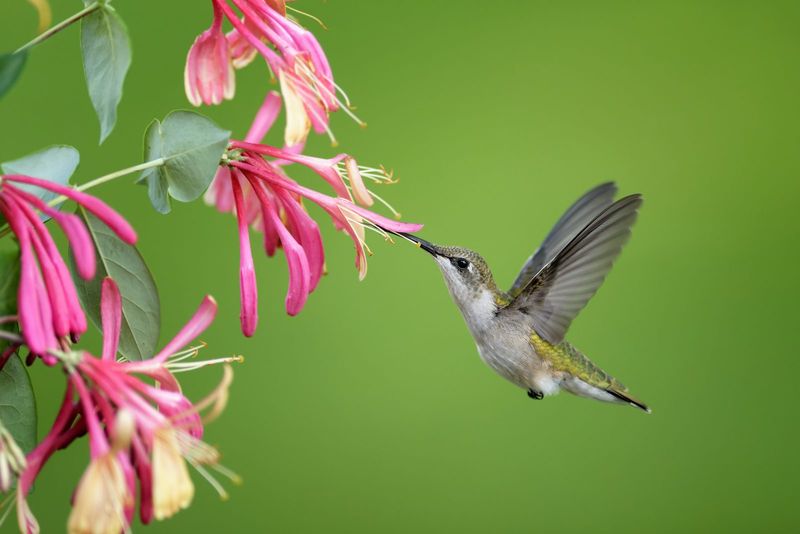
Hummingbirds possess an impressive memory, crucial for their survival. They can remember flower locations, nectar availability, and even the timing of nectar replenishment. This capability allows them to efficiently manage feeding routes, maximizing energy intake.
Their spatial memory rivals that of larger animals, showcasing their cognitive abilities. This skill is particularly beneficial during migration when they need to recall stopover sites.
The combination of memory and instinct enables them to navigate complex environments, ensuring they access the resources needed for survival and reproduction.
Dazzling Iridescent Feathers
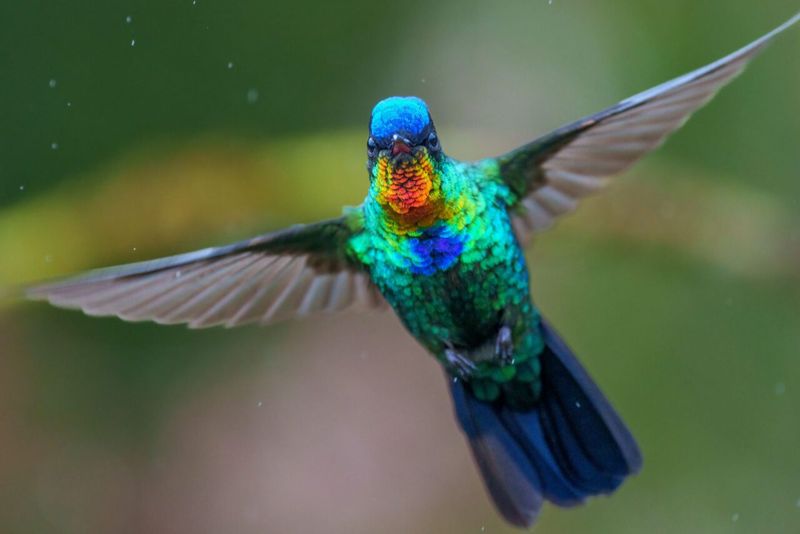
Hummingbirds boast stunning iridescent feathers, creating a dazzling display of colors. This effect is due to microscopic platelets in their feathers that refract light, producing vibrant hues.
The colors can change with the light angle, giving the bird a shimmering appearance. These brilliant feathers play a role in courtship displays, attracting mates with their beauty.
Beyond aesthetics, their plumage offers some camouflage, blending them into floral surroundings. The interplay of light and color in their feathers is a visual feast, highlighting the beauty of nature’s artistry.
Efficient Energy Use
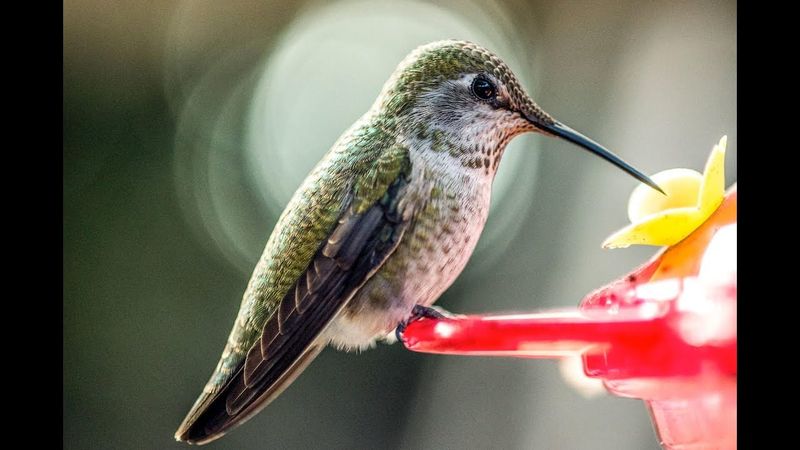
Hummingbirds are masters of energy management. Despite their high metabolic rate, they can enter a state called torpor to conserve energy. During torpor, their body temperature and heart rate drop significantly, reducing energy expenditure.
This adaptation is particularly useful during cold nights or food scarcity. By minimizing energy use, they ensure survival during challenging times.
Their ability to balance energy-intensive flight with conservation strategies underscores their adaptability, showcasing a remarkable evolutionary achievement that allows them to thrive in various conditions.
Hummingbirds Are Aggressive Defenders
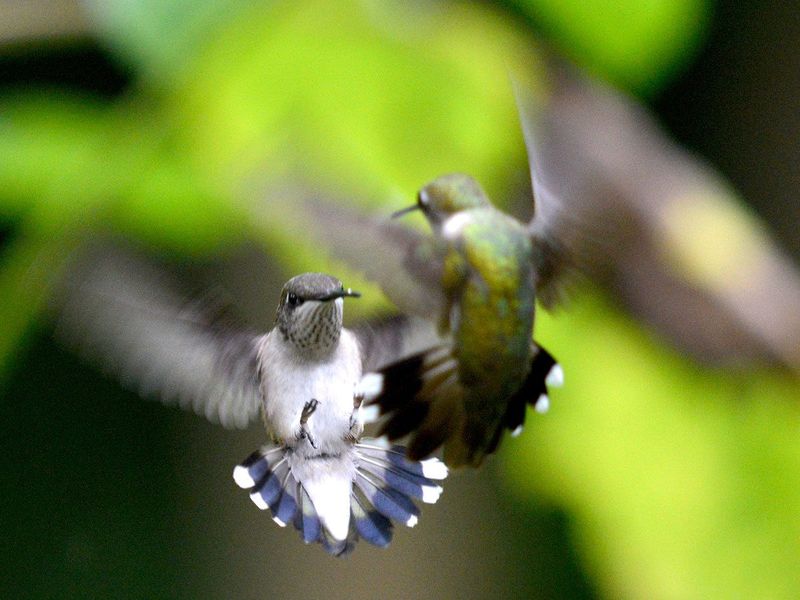
Hummingbirds, despite their small size, can be fiercely territorial. They aggressively defend their feeding areas from other hummingbirds and intruders.
Males are particularly protective during breeding season, ensuring exclusive access to food sources. This behavior ensures their energy needs are met, crucial for survival and reproduction.
Observing these tiny warriors in action is captivating, revealing their determination and boldness. Their territorial nature highlights the competitive world they inhabit, where every resource matters, and survival depends on both agility and tenacity.
They Can Consume Twice Their Body Weight in Nectar Daily
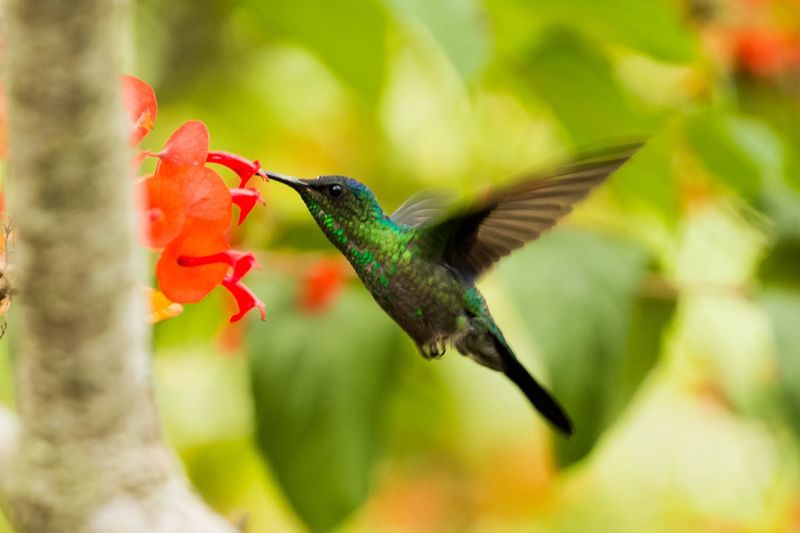
Hummingbirds have voracious appetites, fueled by their high metabolism and energy-intensive flight. They consume up to twice their body weight in nectar daily to meet their caloric needs.
In addition to nectar, they eat small insects and spiders, providing essential proteins. This varied diet supports their active lifestyle and rapid growth during breeding seasons.
Understanding their dietary habits provides insight into their ecological role as pollinators and pest controllers, contributing to the balance of their ecosystems. Their insatiable hunger is a testament to their dynamic existence and ecological importance.
Natural Architects of Precision Nests

Hummingbirds are skilled architects, crafting nests with precision and attention to detail. They use plant fibers, spider silk, and lichens to construct tiny, yet sturdy homes.
The nests are camouflaged to blend into their surroundings, protecting them from predators. Females are primarily responsible for nest building, ensuring a safe environment for their eggs.
Their construction skills are a marvel, reflecting the intricate balance they maintain with their environment. Observing a hummingbird at work is an inspiring sight, a testament to their ingenuity and the delicate harmony of nature.
Their Metabolism Is Astonishingly High
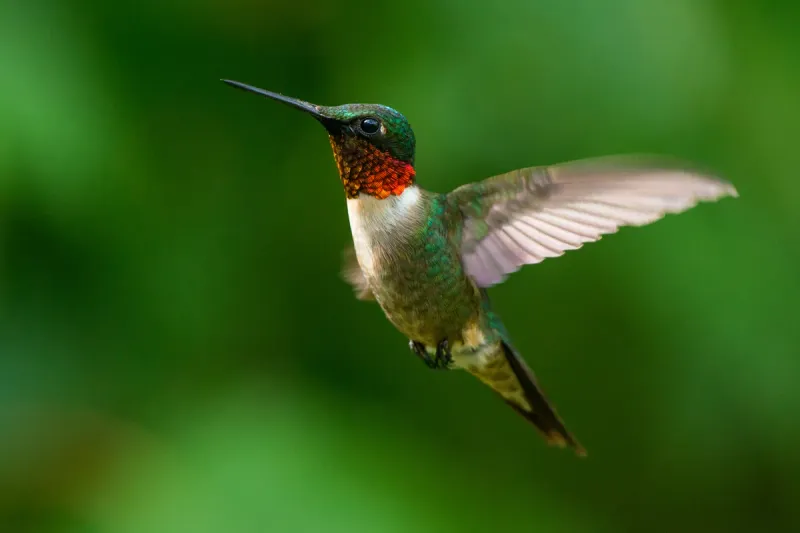
The metabolism of a hummingbird is one of the highest in the animal kingdom, essential for sustaining their energetic lifestyle. They consume vast amounts of food relative to their size, converting it quickly into energy.
This rapid metabolism supports their active flight patterns and constant movement. They must feed frequently throughout the day to avoid energy depletion.
Their metabolic rate is a focus of scientific study, offering insights into energy efficiency and adaptation. It’s a key factor in their survival, enabling them to thrive despite the challenges posed by their demanding lifestyle.
Unique Figure-Eight Wing Motion
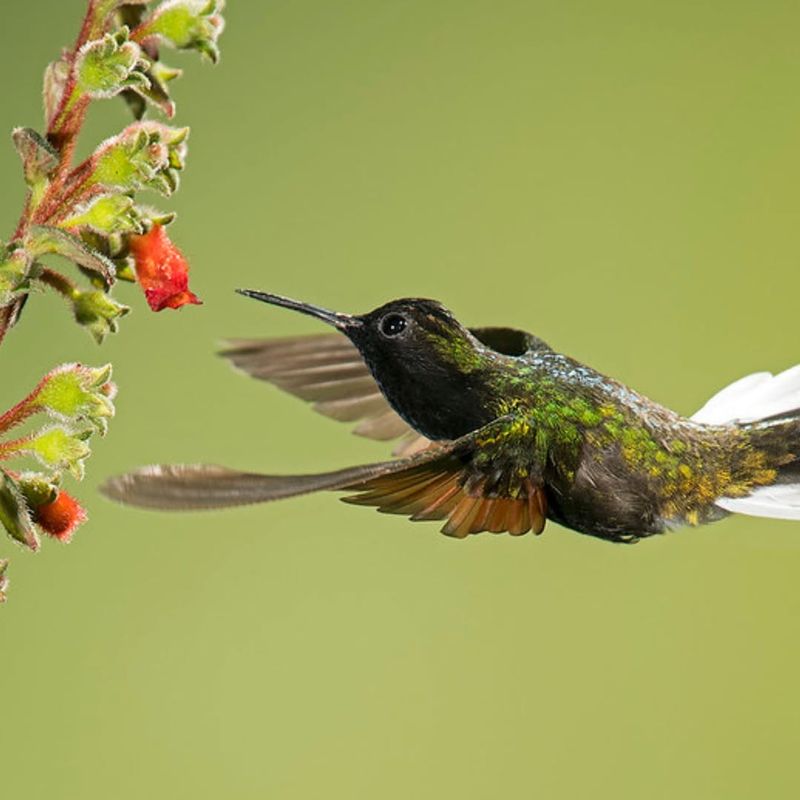
Hummingbirds exhibit a unique wing motion, moving in a figure-eight pattern. This technique distinguishes them from other birds and allows for their exceptional flight capabilities.
The figure-eight motion grants them the ability to hover, fly backwards, and perform agile maneuvers in mid-air. This adaptability is crucial for accessing nectar from flowers and evading predators.
Their wing structure and motion continue to intrigue researchers, providing insights into flight mechanics and evolutionary adaptation. The elegance of their movement is a wonder to behold, illustrating nature’s ingenuity.
Hummingbirds Are Found Only in the Americas
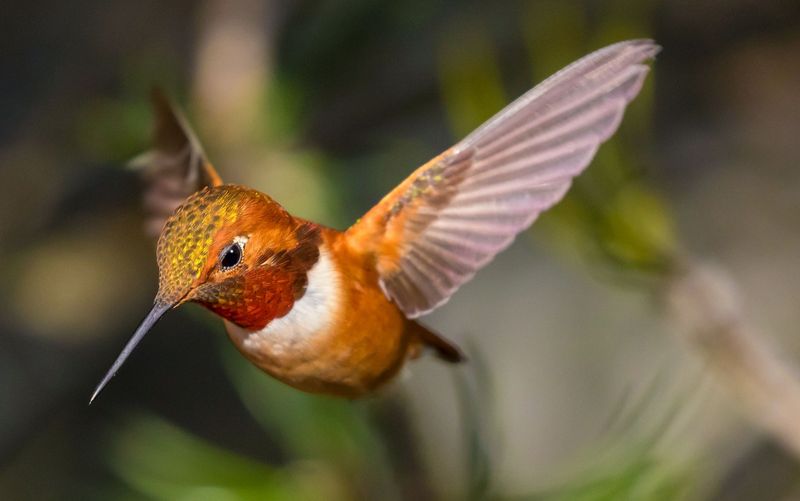
Hummingbirds are exclusive to the Americas, residing from Alaska to Tierra del Fuego. Their distribution spans diverse climates and habitats, from arid deserts to lush rainforests.
They have adapted to thrive in various environments, showcasing their resilience and versatility. This geographical confinement makes them unique, as each region hosts different species with distinct characteristics.
Their presence across the Americas highlights their ecological significance, contributing to biodiversity and the health of their ecosystems. They are a symbol of the rich natural heritage found in these continents.
Rapid Breathing Rate
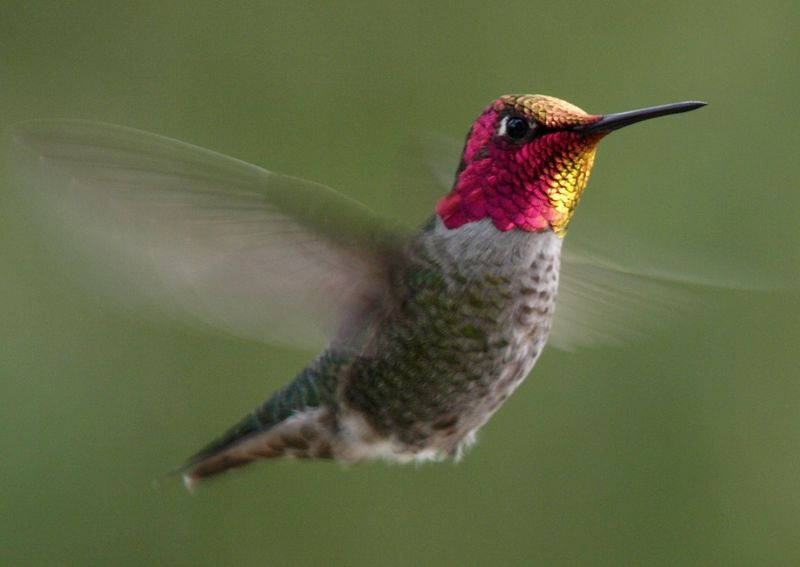
A hummingbird’s respiratory system is finely tuned to support their energetic lifestyle. They have a rapid breathing rate, taking in oxygen quickly to sustain their high metabolism.
Their lungs and air sacs are highly efficient, allowing for maximum oxygen uptake during flight. This efficiency is crucial for maintaining the energy needed for constant movement and hovering.
Their respiratory adaptations are a focus of scientific interest, revealing insights into evolutionary biology and the demands of high-energy animals. The harmony of their physical systems is a testament to nature’s engineering.
Living Energy Explorers
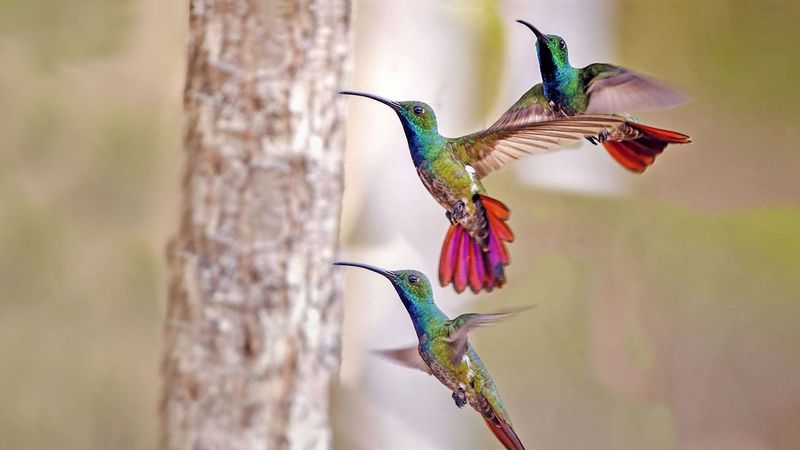
Hummingbirds are energetic explorers, constantly on the move in search of food and territory. Their inquisitive nature leads them to explore new feeding grounds and adapt to changing environments.
This exploratory behavior is vital for their survival, ensuring they find adequate resources and optimal habitats. Their adaptability is a testament to their resilience in the face of environmental challenges.
Observing their exploratory habits provides insight into their survival strategies and the ecological roles they fulfill. They are emblematic of the dynamic and ever-changing world they inhabit, a true wonder of nature.

